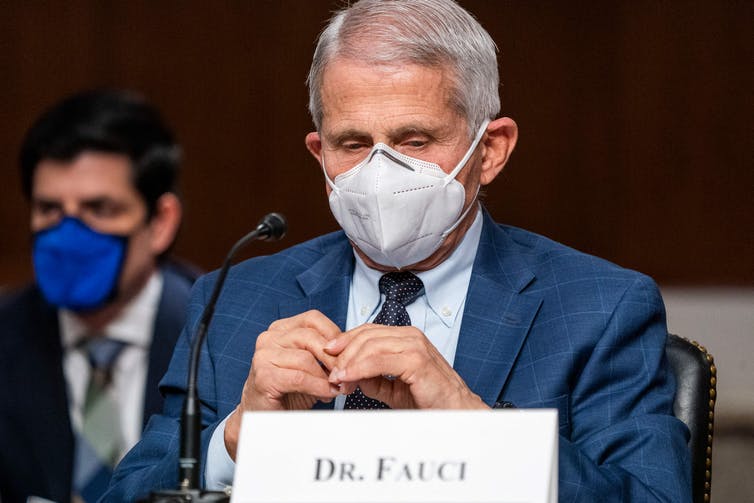“How risky is being indoors with our 10-year-old granddaughter without masks? We have plans to have birthday tea together. Are we safe?”
That question, from a woman named Debby in California, is just one of hundreds I’ve received from concerned people who are worried about COVID-19. I’m an epidemiologist and one of the women behind Dear Pandemic, a science communication project that has delivered practical pandemic advice on social media since the beginning of the pandemic.
How risky is swim team? How risky is it to go to my orthodontist appointment? How risky is going to the grocery store with a mask on if no one else is wearing one and my father is an organ transplant recipient? How risky is it to have a wedding with 200 people, indoors, and the reception hall has a vaulted ceiling? And on and on.
These questions are hard to answer, and even when we try, the answers are unsatisfying.
So in early April 2022, when Anthony Fauci, the president’s chief medical advisor, told Americans that from here on out, each of us is going to have to do our own personal risk assessment, I put my head down on my desk.
Individualized risk assessment is not a reasonable ask, even for someone who does risk assessment for a living, let alone for the rest of us. It’s impossible to evaluate our own risk for any given situation, and the impossibility of the task can make us feel like giving up entirely. So instead of doing that, I suggest focusing on risk reduction. Reframing in this way brings us back to the realm of what we can control and to the tried and true evidence-based strategies: wearing masks, getting vaccinated and boosted, avoiding indoor crowds and improving ventilation.
A cascade of unknowable variables
In my experience, nonscientists and epidemiologists use the word “risk” to mean different things. To most people, risk means a quality – something like danger or vulnerability.
When epidemiologists and other scientists use the word risk, though, we’re talking about a math problem. Risk is the probability of a particular outcome, in a particular population at a particular time. To give a simple example, the chances that a coin flip will be heads is 1 in 2.
As public health researchers, we often offer risk information in this format: The probability that an unvaccinated person will die of COVID-19 if they catch it is about 1 in 200. As many as 1 in 8 people with COVID-19 will have symptoms persisting for weeks or months after recovering.

Anthony Fauci wore a mask in advance of Senate testimony.
Shawn Thew/AFP via Getty Images
To embark on your personal risk assessment, as Fauci casually suggested, you first have to decide what outcome you’re talking about. People often aren’t very specific when they consider risk in a qualitative sense; they tend to lump a lot of different risks together. But risk is not a general concept. It’s always the risk of a specific outcome.
Let’s…



